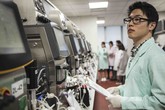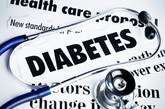Biosimilars/Research
Pharmacokinetics of CT-P6 in patients with HER2+ early-stage breast cancer
Researchers from Celltrion presented data that support the pharmacokinetic (PK) similarity between trastuzumab biosimilar CT‑P6 and originator trastuzumab (Herceptin) [1].
Recommendations for biosimilars in rheumatology in the Middle East
The increasing availability of biosimilars in Middle Eastern regions may provide an opportunity to increase the number of rheumatology patients who have access to traditionally more expensive biologicals. However, as well as a lack of real-world data on the use of biosimilars in practice, the availability of ‘intended copies*’ in the region may undermine physician confidence in prescribing legitimate biosimilars. There is a need for regional recommendations for healthcare professionals to ensure that biosimilars can be used safely.
Selection of quality attributes and test methods in biosimilarity assessment
Biosimilar development starts with a detailed characterization of the quality profile of the chosen reference product, to establish targets for cell line and process development, according to author Vandekerckhove and colleagues [1]. This characterization requires a careful determination of the range of variability for all relevant product quality attributes of the reference product, as well as an understanding of their relative importance, to ensure appropriate focus on the most important attributes. Following process development, similarity of the biosimilar candidate with the reference product must be demonstrated in comprehensive analytical studies. This first step in the demonstration of biosimilarity provides the most sensitive measurement of differences; and is instrumental in deciding the direction of further product development. Meticulous design of the analytical similarity programme is therefore critical to the success of biosimilar development.
Increase in use of biosimilar rituximab for NHL treatment
Researchers from the UK and US reported on how the treatment approach for non-Hodgkin lymphoma (NHL) patients has changed since the first biosimilars of rituximab were approved in the European Union five (EU5: France, Germany, Italy, Spain, UK) [1].
Comparison of biosimilar and originator bevacizumab in NSCLC
A study carried out by international researchers reported results from a comparative clinical study of PF‑06439535, a candidate bevacizumab biosimilar compared to originator bevacizumab, in patients with advanced non-squamous non-small cell lung cancer (NSCLC) [1].
Pooled analysis results of adalimumab, etanercept and infliximab biosimilars
South Korean electronics giant Samsung and biotechnology company Biogen Idec (Biogen) joint venture Samsung Bioepis, along with Biogen, announced on 13 June 2018 results of a pooled analysis combining data from three phase III trials that compared the efficacy and safety of anti-tumour necrosis factor (anti-TNF) biosimilars to their reference biologicals.
Comparison of trial and real-world data for biosimilar filgrastim
A study carried out by researchers from Germany compared results from a randomized controlled trial (RCT) of Sandoz’s biosimilar filgrastim and post-approval data on the safety of the biosimilar [1].
Alternative mAb purification strategies: a tool to increase global access to biotherapeutics?
The monoclonal antibodies’ (mAbs) market is dominant among therapeutic biologicals. Between 2013 and 2017, it has witnessed the approval of 11 biosimilars and 33 new molecules by the regulatory authorities in the EU and the US [1]. A foreseen increase in demand arising from both the western world and several developing countries requires a productivity increase at the same time that the biopharmaceutical industry is being pressured to reduce the costs of life-saving drugs.
Positive switching data for infliximab and etanercept biosimilars
Sandoz, the generics division of Novartis, announced on 15 June 2018 results of new phase III, long-term and switching data for its infliximab biosimilar Zessly (PF‑06438179) and its etanercept biosimilar Erelzi in rheumatoid arthritis patients.
Switching from Basalin to Lantus effective in Chinese diabetes patients
Switching from copy biological (Basalin) to originator (Lantus) insulin glargine is effective in Chinese patients with diabetes mellitus, according to authors from the Qingdao Endocrine and Diabetes Hospital, China [1].












